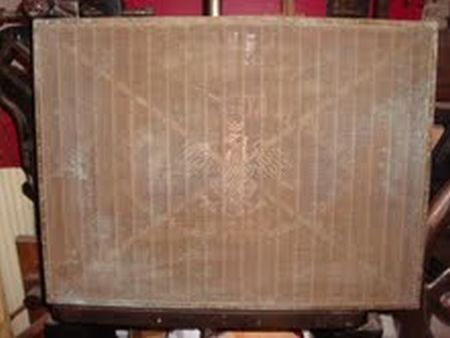The history of paper is well known to anyone dealing with manuscripts, books and other similar material. Paper was the preferred option in Europe due to its cost, which was lower than that of vellum, adopted earlier as the primary writing material. It quickly became known in Western Europe, having travelled from China through the Arab world and the Byzantine Empire.
Paper was also fabricated, a technique that the Arabs were first to use. Its color was a little darker; the surface was smooth and had no watermark lines, such as the ones exhibited by more modern European paper making techniques. In Byzantine it was named “χάρτης βομβυκίνος», in English “cotton made paper,” which was a clear reference to the prime material used. Numerous codices, especially in Mt. Athos or in the Monastery of St. Catherine at Sinai, survive, written on such paper.
In Western Europe, paper made its first appearance in the XIII century. One of the first, maybe the first paper mill was at Fabriano in Italy. Shortly after, a lot of other “paper mills” were erected across Europe. The prime materials used were fibers of cotton and linen, which coincidentally appeared at the same time that the use of underwear garments was introduced. Paper makers seeking large quantities of used cloth discovered that clothes that had been washed several times and their fibers were “loosened” by the excessive use, were “ripe” for the next stage of treatment which would turn them into paper.
Paper making requires a lot of water. As a result, the paper mills were located at riversides so that there was an abundant supply of water. The water was also the moving force for the mill. The clothes were cut in small pieces and placed in appropriate containers filled with water. A series of wooden hammers connected with the waterwheel of the mill allowed a nonstop battering of the fibers, which turned them into a pulp. This pulp was put into large barrels and then it was stirred. The workers used a special wire mesh, submerged into a barrel with pulp placed above it and shaken in order to cover the whole mesh. The water drained downward with the pulp let to form a thin film. The wet pulp from the mesh was placed among large pieces of cloth forming a stack, and then all of this was placed under a press, in order for the excess water to be removed. The next and very important step in the process, before drying, was to make the sheets of paper solid and ready to accept the ink. So, these stacks were submerged into barrels full of animal glue. A small quantity of glue penetrated the damp pulp leaving dried sheet of paper solid. The line patterns noticable on handmade paper formed this way are the result of pressing against the wire mesh.
Before long, paper makers used this feature in order to make their logo appear by adjusting it on the wire mesh. So after drying, this watermark was visible when the paper sheet was help up in front of a light source. The quality of the water was very important in the procedure. We can see the quality of the paper used in typography throughout history, so we can draw some conclusions. The paper made in the area of today’s Ruhr valley has become much darker, because of the oxidation owing to the acidity of water in the area. Exactly the opposite effect is observed with the Italian paper, which remains white and clean even today. The reason is that the water in Italy is full of calcium which is not acidic, and supports the fibers.
The quality of paper making is considered to contribute to a paper “disease” called foxing. Till now, it is not quite clear what causes this phenomenon. Foxing is all these brown spots that we notice in an aged sheet of paper. Scientists suggest two possible reasons: one “internal,” which is connected to the making process and the quality of the prime material; the other reason is “external,” and has to do with the atmosphere and pollution, or the conditions in the places where paper has been stored.


{ 0 comments… add one now }